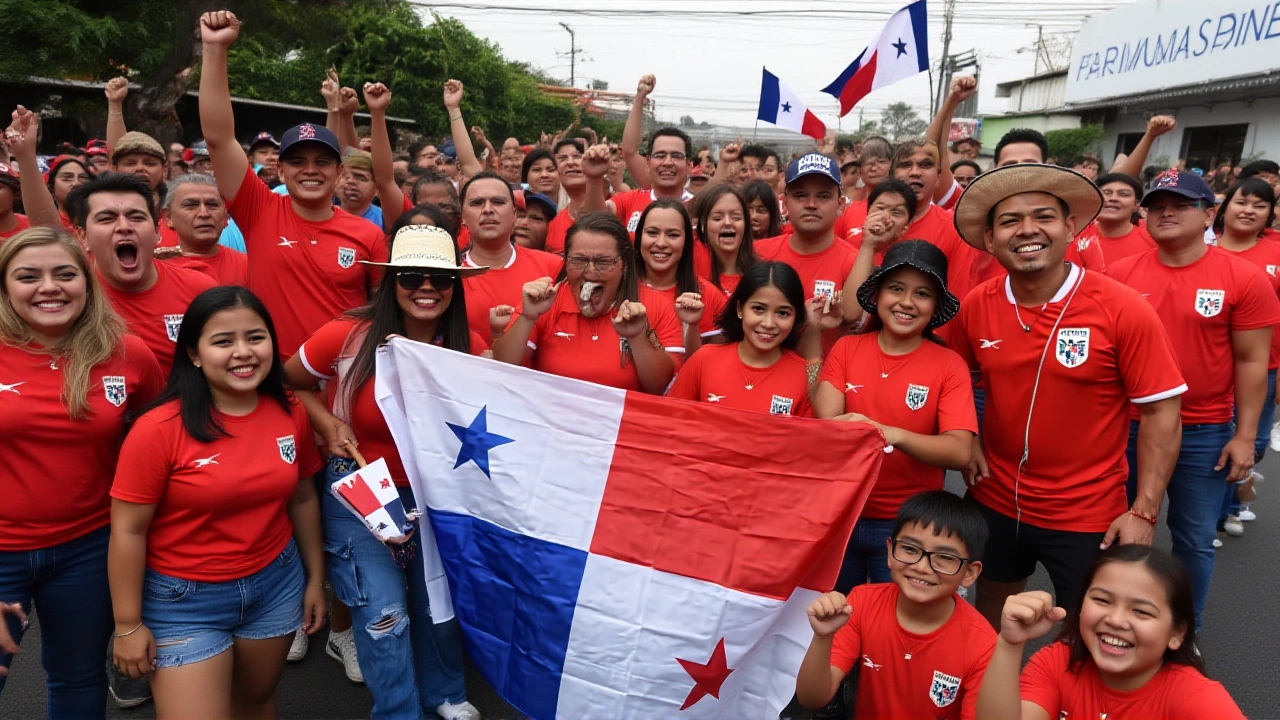On , Panama national football team broke a 49‑year hoodoo by defeating El Salvador national football team at Estadio Cuscatlán in San Salvador. The 1‑0 victory, sealed by a José Fajardo, forward for Panama, marked the team’s first historic win in the iconic venue during CONCACAF World Cup qualifying. Fans in both capitals erupted on social media, using #EstoyMareaRoja to celebrate what many are calling a turning point for the “Marea Roja”.
Background: A Decades‑Long Curse at Cuscatlán
Since their first qualifying clash in , Panama has stepped onto the pitch of the 53,400‑seat stadium seven times without earning a single point. Six of those matches were official qualifiers, the latest before this year being a 3‑0 loss in . The pattern was repeatedly highlighted by local journalists, turning the venue into a psychological hurdle as much as a physical one.
Regional analyst José Pablo Alfaro warned fans in early October that history could become a self‑fulfilling prophecy. In a YouTube video posted on , he noted, “Panamá nunca ha ganado en el histórico Estadio Cuscatlán; the weight of that record can crush a team before the first whistle.”
Match Day: How Panama Turned the Tide
The atmosphere at the Panama vs El Salvador CONCACAF qualifierEstadio Cuscatlán was electric. Over 45,000 fans sang in unison, and the temperature hovered around 30 °C, making the red‑hot pitch a true test of stamina.
Panama pressed from the first minute, exploiting the flanks with quick overlap runs. The breakthrough came in the 68th minute when a low cross from the right found Fajardo, who slotted the ball past El Salvador keeper Alberto Rodríguez with a precise side‑foot finish. The goal sparked a roar that echoed through the city and sent the Panamanian bench into a frenzy.
El Salvador tried to respond, piling on pressure in the final ten minutes, but Panama’s defense held firm, led by captain Aníbal García who made two crucial interceptions. The final whistle confirmed the 1‑0 scoreline—Panama’s first point, and first win, at Cuscatlán in 49 years.

Reactions: Players, Fans, and Pundits Speak
After the match, captain Aníbal García said, “We went in knowing the history, but we chose to write a new page. Every player felt the weight, yet we turned it into motivation.”
Fajardo, beaming, added, “Scoring here feels like lifting a curse. I hope this goal opens the door for more victories in the region.”
The win prompted an outpouring of pride from Panamanian fans. Trending hashtags #EstoyMareaRoja and #CuscatlánConquered filled Twitter, while barbershops in Panama City erupted in spontaneous celebrations, complete with makeshift goal nets on shop windows.
El Salvador’s coach, Roberto Gómez, remained gracious: “We are disappointed, but we respect Panama’s performance. It’s a reminder that every match is a new battle, regardless of history.”
Back in the region, CONCACAF released a brief statement noting that the result “adds a compelling narrative to the ongoing World Cup qualifying cycle and illustrates the competitive balance within Central America.”
What This Means for Panama’s CONCACAF Campaign
Before the game, Panama sat in fifth place in the Central American qualifying group, with one point from two matches. The three‑point boost catapults them to fourth, just two points behind group leader Costa Rica. Statistically, the team’s win probability jumped from 18 % to 32 % for a qualification spot, according to a model from sports analytics firm Opta Sports.
Moreover, the victory improves Panama’s goal differential from ‑2 to ‑1, a crucial tiebreaker in a tightly packed table. The morale boost is palpable; training sessions reported higher intensity, and the coaching staff hinted at a more attacking approach for the next round.

Looking Ahead: Upcoming Fixtures and Stakes
Panama’s next challenge comes on , when they travel to St. John’s, Antigua to face Guatemala. A win there could secure a top‑three finish, making the final round of qualifying more manageable.
El Salvador, on the other hand, must regroup quickly. Their next match against Honduras on is now a must‑win to stay alive in the race.
Analysts point out that Panama’s newfound confidence could ripple through the entire Central American cluster, potentially reshaping the traditional hierarchy that has long favored Costa Rica and Honduras.
- First win at Estadio Cuscatlán in CONCACAF qualifying.
- Goal scorer: José Fajardo (68').
- Panama moves to 4th place in the group with 4 points.
- El Salvador remains 5th with 1 point.
- Next Panama match: versus Guatemala on Nov 2, 2025.
Frequently Asked Questions
How does this win affect Panama’s chances of qualifying for the World Cup?
The three points lift Panama to fourth in the Central American group, cutting the gap to the leader to just two points. With a better goal differential and renewed confidence, the team now needs just one more win in the next two matches to clinch a qualification spot.
What was the historical record of Panama at Estadio Cuscatlán before this match?
Prior to the October 11 game, Panama had played six official qualifying matches at Cuscatlán between 1976 and 2021, failing to earn a single point – three losses and three draws – making the venue a notorious “no‑win” zone for the Marea Roja.
Who scored the decisive goal and what was the nature of the play?
Forward José Fajardo netted the only goal in the 68th minute, finishing a low cross from the right wing with a calm side‑foot placement beyond the keeper’s reach.
What are Panama’s next scheduled matches in the qualifiers?
After the Cuscatlán victory, Panama will travel to Antigua to face Guatemala on November 2, 2025, followed by a home game against Belize on December 7, 2025.
What did CONCACAF say about the significance of the result?
CONCACAF’s communications office noted that Panama’s win “adds a compelling narrative to the ongoing World Cup qualifying cycle and illustrates the competitive balance within Central America,” highlighting the match as a showcase of the region’s rising parity.
